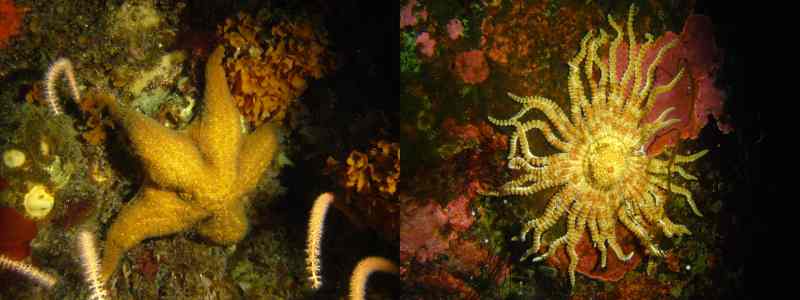
A picture is worth a thousand words – whenever I try to paint an image with words describing the beauty of the underwater world in Antarctica, I like to pull out my pictures and videos because they do a much better job capturing its beauty as is obvious in the image above and below.

For quite some time, I have had the wish to learn and improve my underwater photography and videography skills. Besides being able to take nice underwater pictures in itself, there is nothing better than having a picture to represent what you are trying to describe to a captive audience who might otherwise have trouble visualizing the yet so foreign place I have the privilege to explore. However, underwater camera gear is expensive, especially if you are trying to venture into the realm of DSLRs. But don’t despair, there are cheaper options out there which I started out with and slowly expanded on.
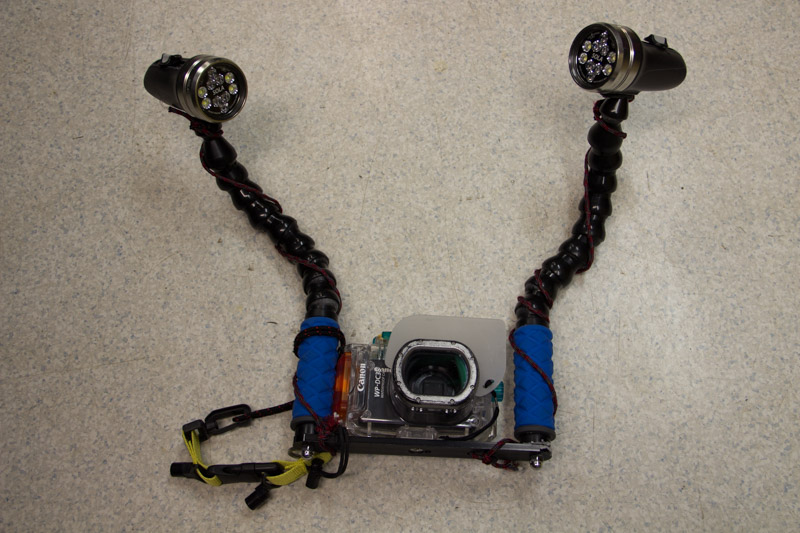
I first got a little point and shoot camera (Canon PowerShot S95) which I bought 5 years ago and it is still going strong. I bought the underwater housing that goes along with it. Naturally, because I invested in two cameras (in case one of them floods and I cannot quickly get a replacement in Antarctica), the camera has never flooded – of course I am quite happy about this fact! I like using the camera on “Program mode” where I can adjust the white balance underwater in case I decide not to use my lights. This is necessary because you lose colors like red very quickly as the water absorbs those wavelengths first which makes everything look blue and green (fun fact: once I went diving in the tropics and got a tiny cut on my finger and the blood looked green!).

My next addition was my GoPro which is great for taking videos. You can also easily add a red filter which enhances the colors in a wide-angle shot in deeper water. The attachment it comes with allows for it to be added and removed underwater. Once you try filming close-up though, the wide angle of the camera is a little hindering. Luckily, someone developed a close-up lens which similarly to the red filter can be added and removed underwater. This has opened up a whole new world of documenting the life down under as fittingly shown in image below!

Last but not least, I added some lights to the system. The frame itself is really helpful when handling the camera underwater with big gloves on (which I do not want to miss when diving in the cold water). I like having 2 lights with a fairly wide beam to fill the whole picture with light. It also helps to angle them so that the light comes in from the sides as it will prevent getting backscatter from particles floating in the water. It perfectly highlights the beautiful colors of our underwater world down here, it feels a little bit like upgrading your black and white TV to a high-definition TV.

The latest addition to my collection is this little camera imaged above. Since the beginning of this season it has come on every single dive with me. It easily clips into an attachment on my mask and automatically starts recording once I pass below 1 meter depth. It records for the entire dive, in 4K, has automatic white balance and, best of all, it also records your depth profile. When I go back and watch the videos, I see depth and temperature in the right-hand corner. This is especially great, when I want to double check which depth we collected things from or what the ecosystem from a particular site looked like! (An example is in one of my previous blogposts: A Reunion of the Sciency Kind)
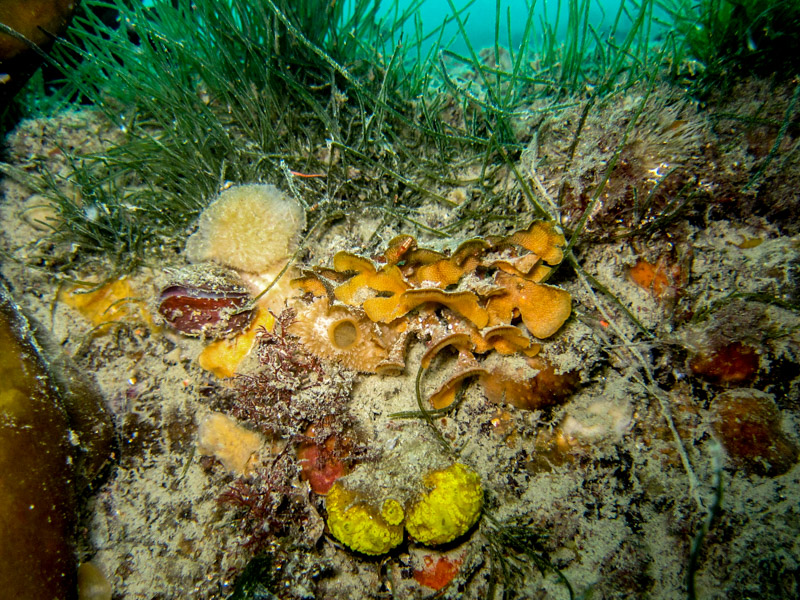
All my set-ups work in tropical, temperate as well as polar conditions. The only difference in Antarctica is that I always have to make sure that the batteries are fully charged. The extreme cold reduces the battery life significantly. The GoPro probably has the shortest runtime (and I have to be choosy about when I use it), whilst the camera that attaches to my mask lasts for the entire dive. Having to wear big, bulky gloves which keep my hands warm makes handling the cameras more difficult and usually towards the end of a dive when the cold is creeping in, I struggle a little more pushing the shutter button down. It also definitely helps to know by heart which button does what as underwater everything slows down a little – including your train of thought.
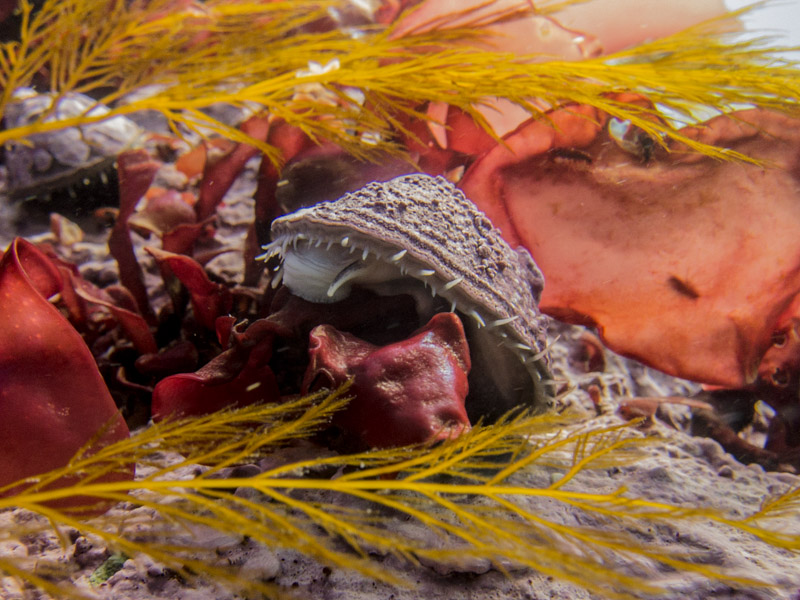
Limpets are definitely one of my favorite creatures to take pictures off. Somehow, they always look cute!
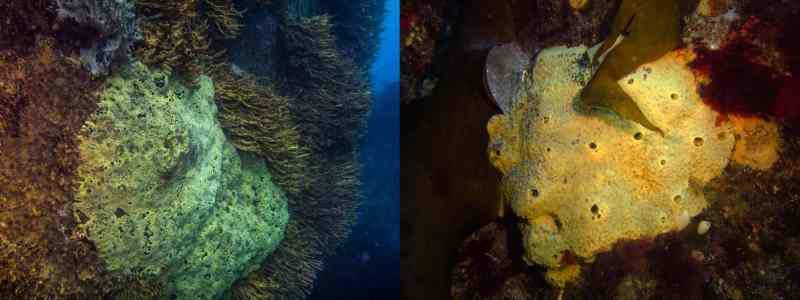
Sponges can get really big here. The sponge in the picture on the left is about 1.5 meters in diameter. Besides having beautiful bright colors, they also have some interesting chemistry as Maggie mentioned in one of her previous blogposts (Bags of water and cactus sponge).
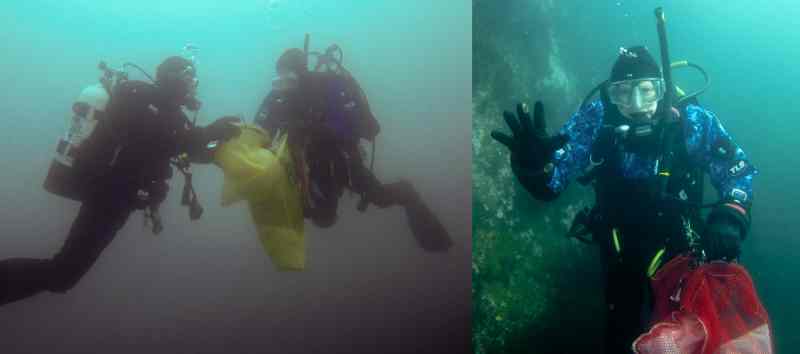
I also enjoy taking pictures of the amazing people I dive with (avove left to right: Andrew Shilling, Chuck Amsler, Maggie Amsler). Those wide-angle pictures are a little trickier as my lights cannot light up the image. The same is true for the picture below but I think capturing the landscape with the big brown macroalgae (like Cystosphaera jacquinotii) is still fun.
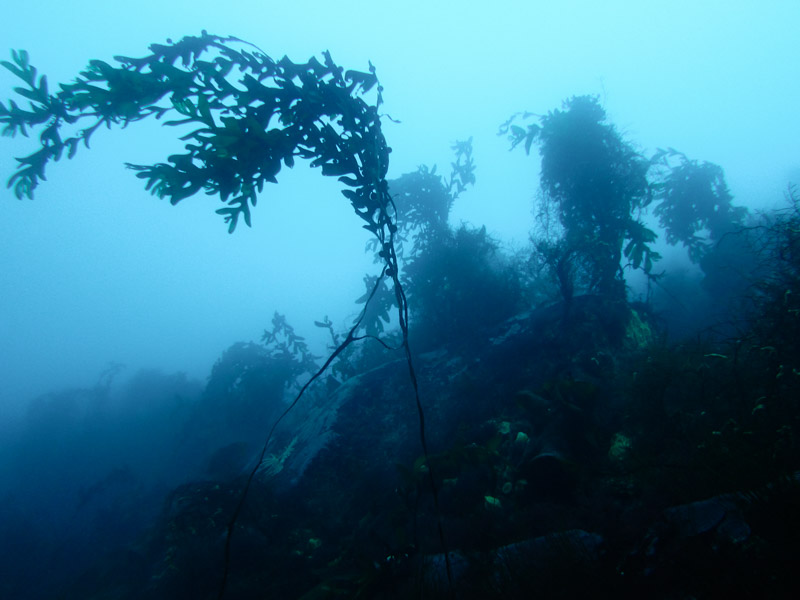
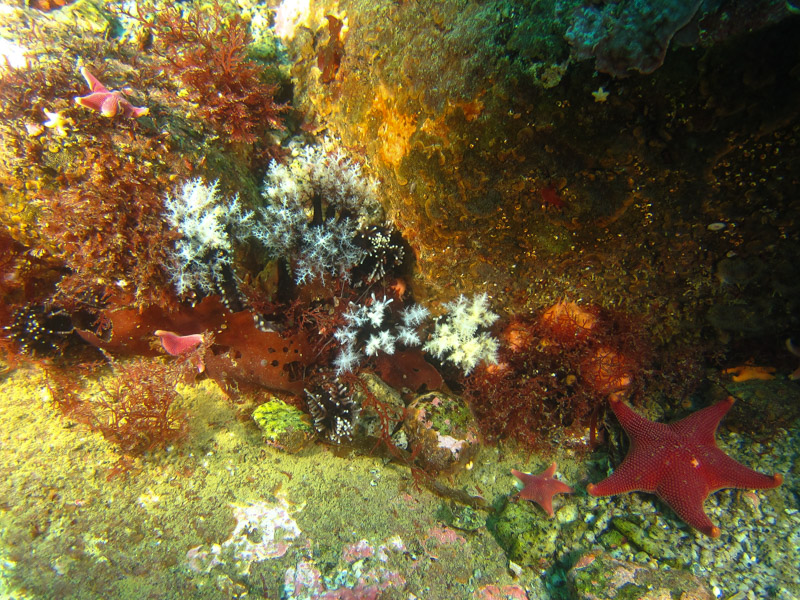
The sea cucumbers above also make my list of top favorite photo ops – especially when the filter feeding ones have their oral tentacles extended like a fine web to catch particles floating in the water.
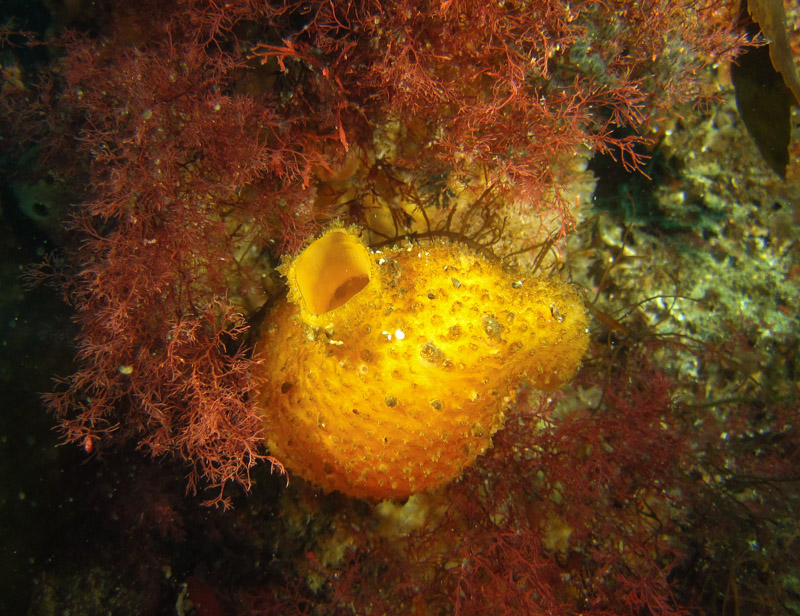
Sea squirts (also filter feeders) are pretty cool, too. The one I captured above is as big as my fist.
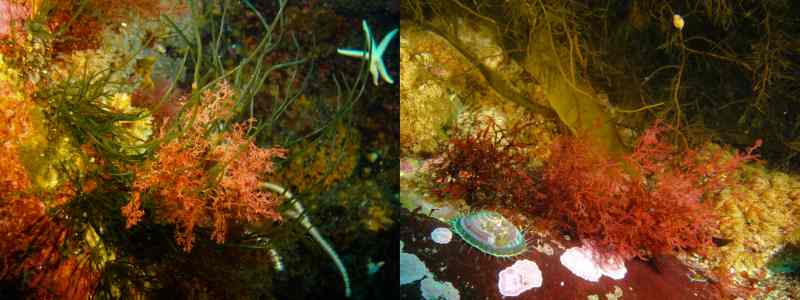
Of course, I cannot leave out my all-time favorite – the seaweeds. Sometimes it is really tricky to get them from the right angle. Or when there is a slight swell in the water, they keep moving with the water motion which makes it difficult to get an in-focus picture. That makes it all the more rewarding though when it turns out nice. The red seaweed in the picture above is Ploc (the seaweed I have blogged about before). The green seaweed in the left picture is one of the only green seaweeds down here (Lambia antarctica).
Last but not least, I cannot end this post without mentioning sea stars. They, too, make for amazing underwater models.
